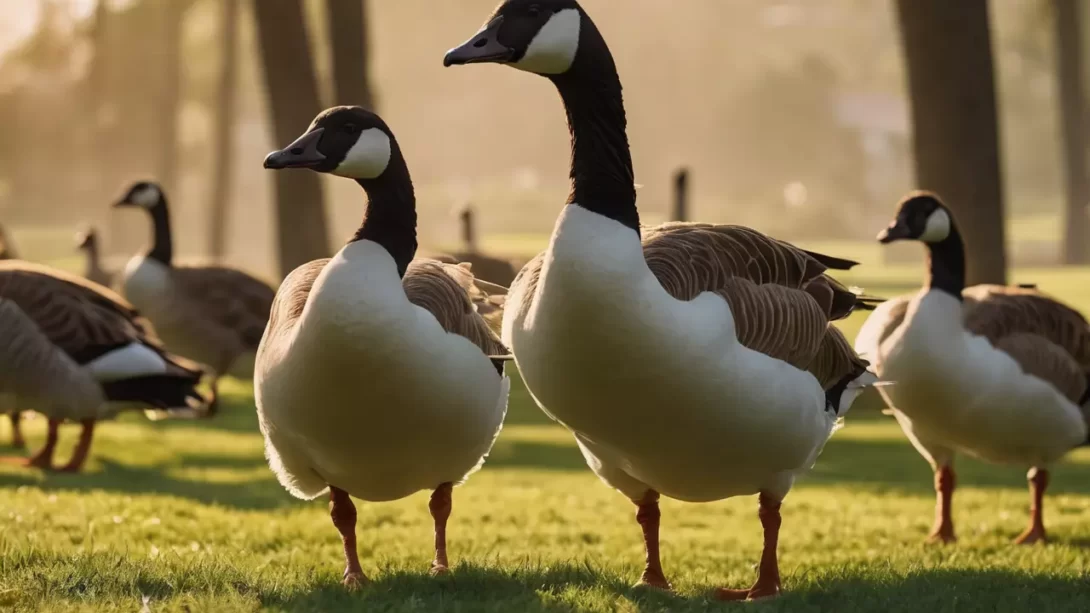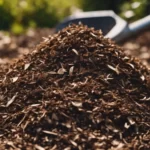Geese can be charming visitors to your lawn, but they often overstay their welcome, leaving behind a trail of damage and mess. Understanding how to effectively and humanely deter these birds is crucial for maintaining a healthy and enjoyable outdoor space. This guide will explore a variety of methods to keep geese at bay, ensuring they don’t turn your lawn into their permanent residence.
Goose Behavior
Knowing why geese are attracted to your lawn is key to deterring them. Geese primarily seek out areas for ample food sources and safe nesting spots. Lawns with short grass provide an ideal grazing ground for them. Additionally, geese are attracted to areas where they feel safe from predators, which often includes open, expansive spaces like lawns near bodies of water.
Legal Considerations and Wildlife Ethics
Before implementing any goose deterrent strategies, it’s important to be aware of the legal protections and regulations surrounding these birds. In many regions, geese are protected under wildlife laws, making it illegal to harm them or disturb their nests. Therefore, the focus should be on humane and non-invasive deterrent methods.
Physical Deterrents
Fencing
Installing a fence can be an effective way to prevent geese from accessing your lawn. The ideal fence should be at least 30 inches high and made of a material that geese cannot easily pass through or over. Temporary or seasonal fencing options can also be considered if geese are only a problem at certain times of the year.
Decoys
Utilizing decoys like fake predators (owls, coyotes) can scare geese away. These decoys should be moved regularly to maintain the illusion of a real threat. It’s important to note that geese may become accustomed to stationary decoys over time, reducing their effectiveness.
Reflective Materials
Reflective tapes, balloons, or mirrors can disorient and deter geese. These materials can be hung around the lawn, particularly near areas where geese are known to congregate. The movement and reflection of light from these materials create an environment that geese find uncomfortable.
Habitat Modification
Making your lawn less attractive to geese is a long-term solution for deterrence. This involves altering both the landscape and the way you manage your lawn.
- Plant Choices: Opt for taller grasses or plantings that geese find unappealing. Geese prefer short, manicured lawns for visibility and easy grazing. By letting your grass grow a bit taller, you make your lawn less inviting.
- Water Access: If you have a pond or water feature, consider modifying the access points. Geese prefer easy access to water for safety. Creating barriers or planting dense shrubbery around these areas can deter them from settling in.
These strategies, combined with consistent maintenance and monitoring, can significantly reduce the presence of geese on your property. In the following sections, we will explore natural and chemical repellents, auditory deterrents, and community cooperation methods to further enhance your goose deterrence efforts.
Natural Repellents
Utilizing natural repellents is a safe and eco-friendly way to keep geese away from your lawn. These can be homemade concoctions or commercially available products.
- Homemade Repellents: Mixtures involving ingredients like chili pepper, garlic, or vinegar can be sprayed on the lawn. These substances have strong scents or tastes that geese find unpleasant.
- Commercial Repellents: There are several products on the market specifically designed to repel geese. These usually contain methyl anthranilate or other substances that geese dislike. It’s crucial to follow the manufacturer’s instructions for safe and effective application.
Ultrasonic and Auditory Deterrents
Sounds can be an effective way to deter geese, particularly ultrasonic noise that is unpleasant to them but not audible to humans.
- Ultrasonic Devices: These emit high-frequency sounds that are irritating to geese but not harmful. The placement of these devices is important for maximizing coverage and effectiveness.
- Auditory Deterrents: Playing recordings of goose distress calls or predator noises can scare geese away. These sounds should be used intermittently to prevent geese from becoming accustomed to them.
Chemical Repellents
For more persistent goose problems, chemical repellents can be an option. It’s crucial to choose products that are environmentally safe and approved for use in your area.
- Types of Chemical Repellents: Common ingredients in these repellents include grape extract or other substances that create an unpleasant taste for geese.
- Application: Carefully follow the instructions for application. These repellents usually need to be reapplied after heavy rains or as directed on the packaging.
Community Cooperation
Geese are highly mobile and can easily move from one area to another. A neighborhood-wide approach can be more effective than individual efforts.
- Coordinated Strategies: Discuss with your neighbors about implementing similar goose deterrent methods. This can help in creating a larger area that is less attractive to geese, encouraging them to move on.
- Community Initiatives: Participate in or organize community meetings to discuss humane goose management strategies. This can also be a platform for sharing successful techniques and learning from each other.
Monitoring and Adjusting Strategies
Regular monitoring is essential to determine the effectiveness of your goose deterrence methods. Keeping a record of goose activity before and after implementing these strategies can provide valuable insights.
- Observation: Regularly check your lawn for signs of geese, such as droppings or feathers. Note any changes in their behavior or patterns.
- Adjustments: If certain methods seem ineffective, don’t hesitate to try alternative strategies or combinations of methods. For example, if geese become accustomed to decoys, consider switching to auditory deterrents.
Long-Term Management and Persistence
Managing geese is often an ongoing effort, requiring persistence and adaptation to changing conditions.
- Seasonal Considerations: Be aware that geese behavior changes with seasons. They might be more prevalent during migration periods, requiring different strategies.
- Consistency: Regularly maintaining deterrent methods is key. For instance, repellents need reapplication, and habitat modifications should be kept up.
Conclusion
Dealing with geese on your lawn can be challenging, but with the right strategies, it’s manageable. Remember to start with humane, non-invasive methods, and be mindful of wildlife laws and ethical considerations. Combining physical deterrents, habitat modifications, natural or chemical repellents, and community cooperation can effectively keep geese at bay. Regular monitoring and adjustments are crucial for long-term success. Patience and persistence are your best tools in managing these feathered visitors while maintaining a healthy and enjoyable outdoor space.




